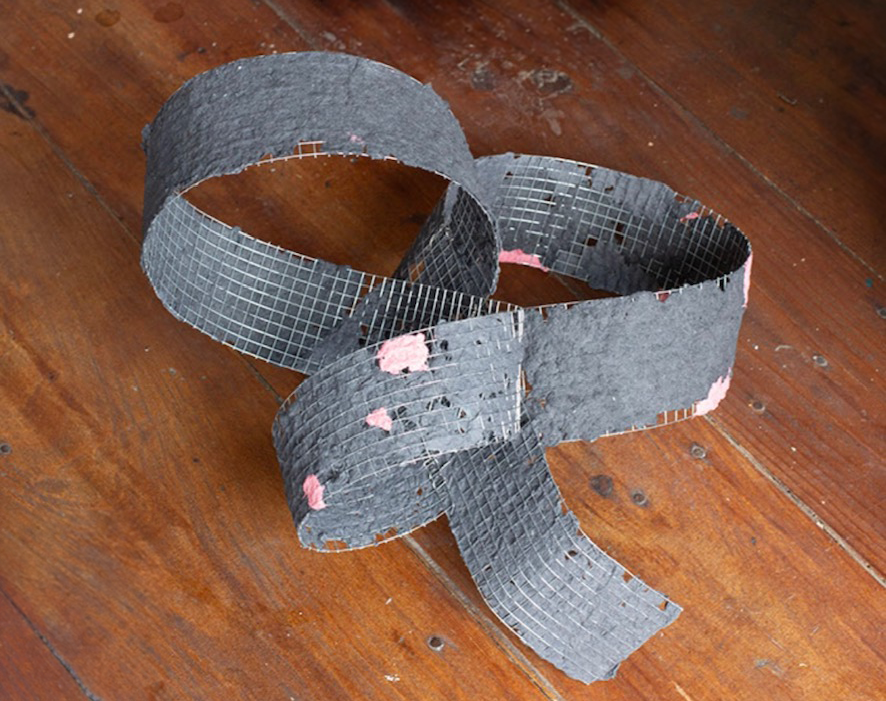GOLPES BAJOS
Halfhouse, Barcelona
Looking inward.
Sitting low, perfect enclosed joints, units that might solve their making.
Rough skin, but clean, unknotted brows.
They mark gestures of grace—torsions, yes—but ones that still hold the simplicity of
of a stroke, a blow, their internals tied up in themselves.
They point to their corners, say “here are my corners, here I demonstrate my extent,”
these curves are billowings out, think the ebullience of being such
a sail caught in full wind.
Despite this, the focus of their torque is truly inward, a closing in
to moments of self-touching. Claw pinch, finger tip.
They touch the floor and meet it, land where they are and no
more. …
Outwardly, they are flexed—flex for you—
flex for themselves—themselves—flex in a mirror.
But, do not forget that they quiet their loudest face, are muffling something…
Poised on surfaces they are invertebrate—rest like Lygia Clark’s
Soft, these unclassified beetles alight against an edge.
Others hover,
just graze the floor, then mutely
set down.
…
Over here—the satisfyingly grubby quality of a thing overhandled,
a piece paper in your pocket
touched too much.
We speak about the difficulty of making+
I learn early on that you glean jeans.
To glean is to take what otherwise would go to further waste.
We wear denim and we wear denim down and it wears at us,
too—imprints at hips,
maybe.
Seams in the fabric where it’s doubled or tripled over
emboss our flesh surface, cause us
polished by contact.
Cause us sanded down.
Under your gleaning hand, they begin a different life.
Glean the denim and turn it to pulp,
make it object again, a slow untying by hand…sifted through and sorted for
parts, pulped over hours in the pulper. You show me videos.
To glean can also be immaterial, as in to glean information.
Take the thing down to this fine gunk,
build it to new form +in doing so,
try to get something from it
and also to give something
to it—a double bind,
for form does not necessarily achieve closure,
nor does raw materiality provide openness (Lyn Hejinian).
To have made something new does not necessarily answer a question.
…
Sitting on the studio floor, or outside in the rough grass,
we are trying to name our knots.
To name them so
that we may begin to know them
—and this does not mean we try to plot their undoing.
Moments or phrases of action punctuated by large periods of pause. Here,
both such units/qualities of time, are evidenced. And,
might such pause be pause that we won’t try
and untie?
That we will leave as is?
+are these pauses
pauses
that are lumps in the
throat +that will stay that way?
You want to make your knots into knots and then leave them there, on the table, on the floor,
in the doorway. You realise that you, having unknotted one urge, are not left with
a clarified surface at all.
Again: to have made something new does not necessarily answer a question.
You say: different containers (rooms) bear different gestures.
Knots and zips are this, too. Are rooms to contain
different ways of acting.
We know a knot, at minimum, has been knotted and might be
undone.
A zip, instead, holds power both in the closing and the
opening +each gesture,
each act of zipping up or down
is
architectural space change.
Where knots are fibres bound in sympathy (Tim Ingold),
they also speak what we have trouble undoing.
A zip is none of this, is
—free planar passage open to closed to open again—
a lateral, simple potency.
When freed of fabric around it, it loses some (not all) of this potency.
It can shift about more, though it still fixes to its point when worn by a body.
A zip is demonstrative,
is potential
is a moving knuckle
pointing up or down.
We pause at the crotch.
We always do.
The dictionary says a crotch is the ‘fork’ or bifurcation of the human body
body where the legs join the trunk. It is the point where we (might) split
in two.
…
We are compassed to know where zips might go.
I like how you say How immediate it is to unzip and take off your pants.
How fast the buttons open. Yes. And, style, these known grammars, gives us such
navigational tools (Rosi Braidotti). Your chamfer in the doorway, soft silent guide,
mutters
look that way. Such navigable tools, though, might lead us
to un-compassing, to de-compassing. Sometimes desire, intuition, is such that it does
decompass you, splits a thing (you) in two.
You lose the horizon.
Texto by Kate Morgan
